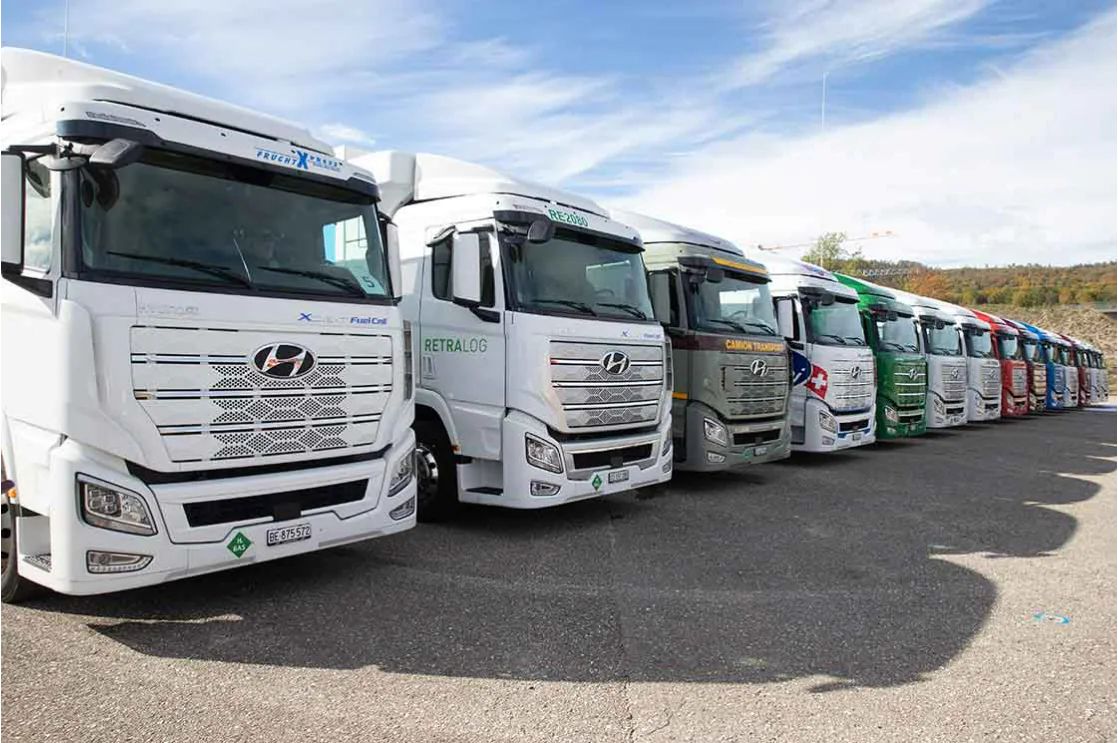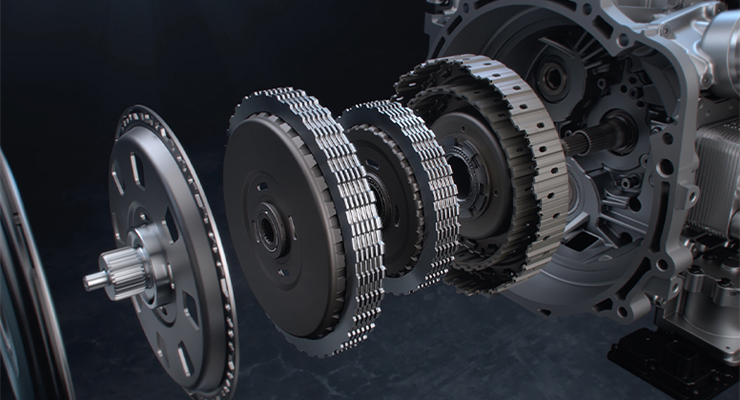Since our first foray into motorsport in 1998, our Hyundai Motorsport team has established itself as a well-known name in rally series around the world. Our maiden World Rally Championship (WRC) title in 2019 was a landmark moment as not only was it the first win for a Korean team, it was the culmination of many years of hard work. We then went on to secure our second title in 2020, and now the sky’s the limit.
Our Hyundai Motorsport division was first set up in the German town of Alzenau, near Frankfurt, in December 2012. This marked the beginning of a brand-new chapter for us. A chapter that would eventually lead us to the top prize in international rallying. But, our rally roots stretch back much further, well into the 1990s in fact.
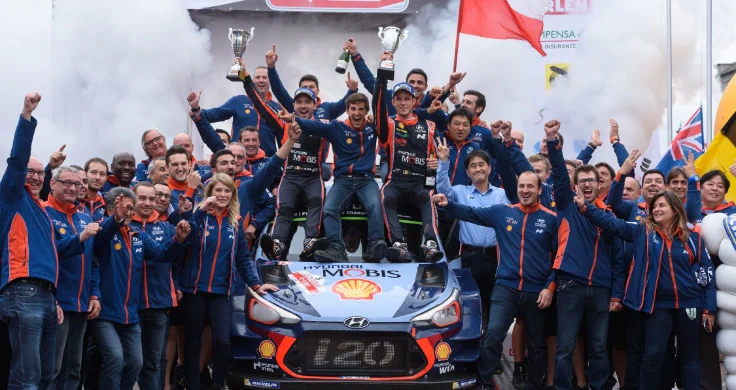
The Early Days (1991-1999)
One of the first drivers to compete in major events with a Hyundai car was Australian rally legend Wayne Bell. He began using a Hyundai Lantra for regional rallies in Australia and South East Asia as far back as 1991 and picked up class wins almost from the word go. From 1993 onwards, he received the backing he needed to compete in the Asia Pacific Rally Championship (APRC). But Bell had his eye on an even bigger prize.
Encouraged by this early success in regional events, we decided to enter a pair of F2 cars in the 2-liter World Rally Cup (the equivalent of today’s WRC-2 category, which the Hyundai i20 R5 competes in now). The plan was to use this series as a steppingstone to prepare the team the drivers and our cars for the WRC. We brought in the British firm - Motor Sports Developments - to run the cars and we effectively merged with Bell’s Australian team in the process.
It’s easy to look back on F2 as a stepping stone to the WRC, but that car had real presence, it took lots of class wins. It was a very strong start for us.
This collaboration resulted in the creation of our Hyundai Coupé Kit Car. This curvaceous little coupé took inspiration from the car that Bell had campaigned in the APRC the year before. It was built with an immensely strong chassis and a torquey long-stroke engine.
The Hyundai Coupé Kit Car made its 2-liter World Rally Cup debut in Portugal in March 1998, with Bell finishing fourth in class. His teammate Kenneth Eriksson also put in a strong performance before retirement cut his rally short. Alister McRae joined the team from the next round onwards.
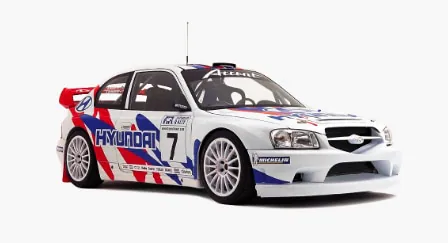
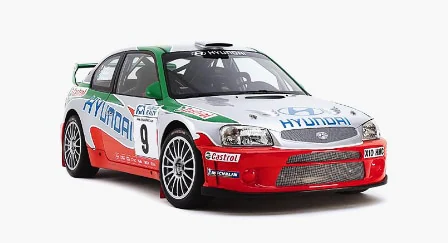
We continued to compete in the F2 class throughout 1999 with former touring car boss Paul Risbridger at the helm as team manager. That year, we won the 2-liter class of the APRC and came extremely close to winning the 2-liter World Rally Cup - finishing just seven points behind the far more experienced Renault team.
In September 1999, we unveiled the Accent WRC, a World Rally Car based on the Hyundai Accent. After development and testing that year, we took our new rally car to the WRC in 2000.

First Foray into the WRC (2000-2003)
We initially chose to compete in the F2 championship because racing took place at many of the same events as the WRC. This meant that we could build a lot of the infrastructure before starting on our World Championship campaign in earnest. Nonetheless, the F2 championship was a steep learning curve for our young team.
We designed and built our first WRC car in less than eight months, while competing in the first 10 rounds of the 2-liter World Rally Cup. By that point, we were used to running the team, but the technology on the WRC car was a huge step up from that used in our F2 cars.
World Championship rallying is the most complex motorsport in the world. For circuit racing you can build one car that does the same thing every week, for rallying you have to build three cars - one for gravel, one for tarmac and one for snow.

There are fundamental differences between what works well on a fast, smooth gravel stage and what works well on a rougher, slower gravel stage. It’s a huge engineering challenge.
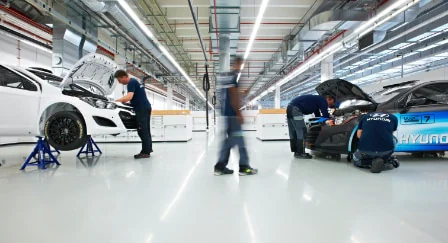
After months of development and testing, the new Hyundai Accent WRC made its debut at the Swedish Rally in February 2000. "We put in a huge amount of work to get the cars to Sweden," says Paul Risbridger. "There were three all-night sessions before the event to ensure everything was ready. Both cars finished, which was our main target for that first event. It was really satisfying to see the car that we’d created from scratch out there in action."
After the debut of the Hyundai Accent WRC in Sweden, the team achieved their first top-ten result at that year's Rally Argentina, where Alister McRae and Kenneth Eriksson finished seventh and eighth, respectively. Eriksson later drove the car to fifth place in New Zealand and fourth in Australia. 2000 was the Accent WRC’s most successful year yet, with the team finishing fourth in the manufacturers’ standings, ahead of Skoda and Mitsubishi.
Unfortunately, we had to withdraw from the championship in 2003, but we had managed to successfully introduce the team to international-level motorsport and give them a taste of success. We may not have known it then, but this period also laid the foundations for what was to come.

A new chapter (2012-2014)
9 years later at the 2012 Paris Motor Show, we announced that we would be returning to the WRC for 2014, using the i20 model built to World Rally Car specifications. On 19th December 2012, we established our motorsport division - Hyundai Motorsport GmbH - in Alzenau, Germany, which is responsible for all our global motorsport activities.
With the foundation of our new motorsport division, we were ready to re-enter the world of rallying and start a new chapter. By June 2013, our motorsport team had moved into a brand-new 8,200 square meter facility and employed a dedicated team of 50 in-house professionals from 11 different countries. The headcount soon grew to more than 120. We also brought in Michael Nandan - a hugely experienced WRC manager with three manufacturers’ titles to his name in the early 2000s - as the new team principal.
The first job for our new team was to develop our new WRC car. Designed and tested in secret, the i20 WRC was a collaboration between Hyundai Motorsport in Alzenau and the Namyang R&D center in South Korea. Finnish driver Juho Hänninen was brought in for the first shakedown test, which was carried out on a disused airfield in France. Later, Frenchman Bryan Bouffier and Australian Chris Atkinson joined the test program, both clocking up thousands of kilometers of driving on a wide range of different terrains and in varying conditions.
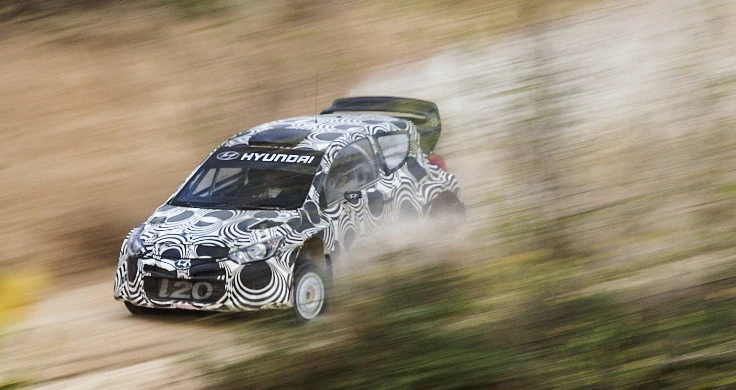

We officially unveiled the all-new i20 WRC at Hyundai’s European headquarters in Offenbach on 10th December 2013. It was a momentous day for us all. Along with the launch of the rally program, we also announced that we would be using our ‘N’ designation for all our high-performance activities, both in motorsport and future road car projects. In many respects, this day marked our arrival as a true sporting brand.
Young Belgian star Thierry Neuville headed up the driver line for 2014 with co-driver Nicolas Gilsoul, alongside the versatile Spanish pairing of Dani Sordo and Marc Marti. Hänninen, Bouffier and Atkinson all competed for the team in selected rounds (with co-drivers Tomi Tuominen, Xavier Panseri and Stéphane Prévot respectively). Shortly afterwards, young New Zealander Hayden Paddon and his hugely experienced co-driver John Kennard would be confirmed as the final crew for that year.
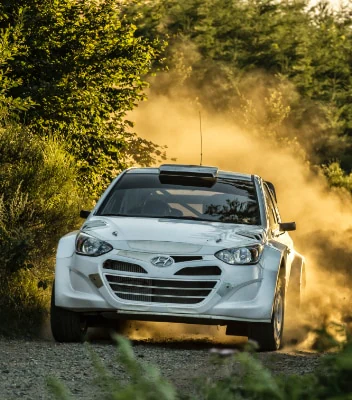
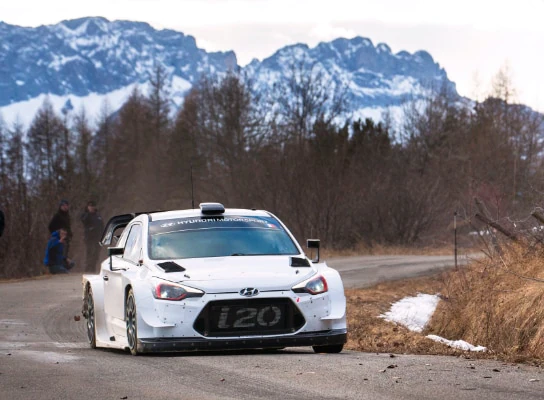
Neuville and Sordo were picked to be the drivers for the newly created team’s first event at Monte Carlo in January of that year. Both retired, but the car’s performance was encouraging, with Sordo setting the second-fastest time on stage 4. Things improved rapidly from there, Neuville clinching a podium finish in Mexico, followed by an historic 1-2 victory in Germany. The new Hyundai Shell World Rally Team finished a respectable fourth (out of eight) in the manufacturers’ standings in our debut season.

Building momentum (2015-2018)
Once the season finished in 2014, we had established ourselves as a genuine contender in the WRC. From that point on, the fight was on to secure our first world championship title. Atkinson, Hänninen and Bouffier stepped back and Dutchman Kevin Abbring was drafted in for selected events in 2015, with co-driver Marshall Sebastian.
The highlights of the 2015-2016 season included podium finishes in Sweden, Sardinia and Spain. Meanwhile, behind closed doors, the New Generation i20 WRC was starting to take shape in preparation for 2016.

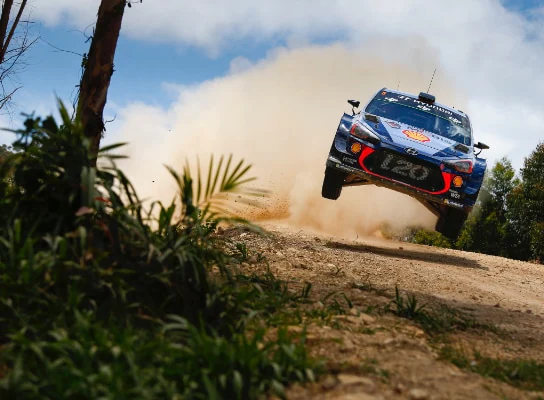
The new i20 WRC, which used the five-door i20 as its base (in place of the three-door model that had been used previously), boasted improved weight distribution and enhanced aerodynamics. Neuville drove the car to third on its first event in Monte Carlo - one of 12 podiums in 2016. That year, he also secured two wins and no less than 47 stage victories. As a result, we came second in the manufacturers’ championship, while Neuville finished as the runner up in the drivers’ championship.
The following year ushered in a whole new era for the WRC. A new set of technical regulations brought more power, less weight and significantly more freedom in the aerodynamic design to our rally cars. It was likened to the glory days of Group B, with the cars promising to be the fastest and most dramatic WRC machines in years.
With these new rules, we welcomed the start of the new season with our new i20 Coupe WRC. In this car, Neuville came in second in the drivers’ championship after having led for significant parts of the season. And we came in second in the manufacturers’ championship again.
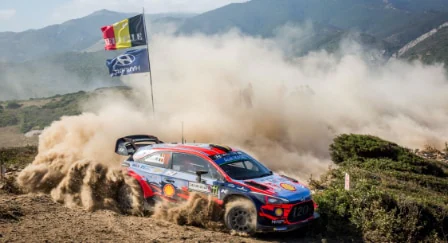
It was a similar story in 2018. Neuville led the championship for most of the year, only for bad luck to intervene in the closing stages. He went into the final round in Australia just three points behind the championship leader and with a very close shot at clinching the title. Unfortunately, a puncture on the first day meant that he lost a few places, which he then managed to regain, only to clip a tree near the end of the final day and retiring. Nonetheless, it was our best year yet as we finished a handful of points behind the leaders in both the drivers’ and manufacturers’ championships. The WRC title was now close. Tantalizingly close…
It was the peak of a job that was started many years ago. Finally, everything fell into place and we got the title that we had fought for, for years before. It was a very special moment.
Our first victory at the WRC (2019)

Current team director Andrea Adamo took over from longstanding principal Nandan at the start of 2019. The former head of Hyundai Motorsport’s customer program, Adamo came to the team with a background in LMP prototypes and touring cars. The 47-year old Italian brought a renewed hunger to the team. There was also exciting news elsewhere, with the most successful driver in WRC history, Sebastian Loeb, joining the team for six rounds of the championship along with his co-driver Daniel Elena.
The year started well, with podium finishes for Neuville in Monte Carlo and Sweden. Back-to-back victories in Corsica and Argentina put the Belgian on top of the leader board, before a huge accident in Chile caused him to retire from the event and drop to third in the title chase. Meanwhile, strong performances by Dani Sordo and Andreas Mikkelsen helped us maintain a small lead in the manufacturers’ championship.

It was all to play for as the teams headed to what would become the final round of the 2019 season in Catalunya. Neuville found himself in a tense battle with Ott Tänak that raged through to the final stage. In the end, it was Neuville who came out on top, snatching second in the drivers’ championship in the process. Sordo continued driving well and finished third
But the biggest celebration was reserved for the team. We managed to extend our lead in the manufacturers’ championship in Catalunya, and with the cancellation of the planned finale in Australia, we took our first ever WRC title!
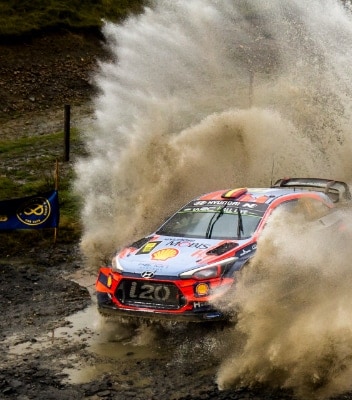
Triumphing during the most challenging season yet (2020)
We entered our seventh season in WRC with a huge amount of collective drive, all focused towards one common goal: to provide our crews with the most competitive car possible to defend our 2019 manufacturers’ title.
The WRC regulations remained unchanged in 2020, which gave us the perfect opportunity to further improve our championship-winning i20 Coupe WRC across all terrains. During a disrupted season, due to the Covid-19 pandemic, the team worked tirelessly to keep upgrading the car throughout the year, giving our talented crews the best chance to pick up the points we required to secure a second consecutive manufacturers’ title.
The team’s hard work certainly paid off, as our i20 Coupe WRC claimed victory on the tarmac and snow of Monte-Carlo, as well as picking up gravel wins in both Estonia and Italy. Despite the odds, we successfully completed our mission and scored a second win, which wrapped up an incredible season for our team. With three wins, 11 podiums, and 54 stage wins, we had plenty of things to celebrate in 2020!
The performance and attitude of Hyundai Motorsport in this most challenging of seasons has perfectly embodied the character of Hyundai and our N brand.
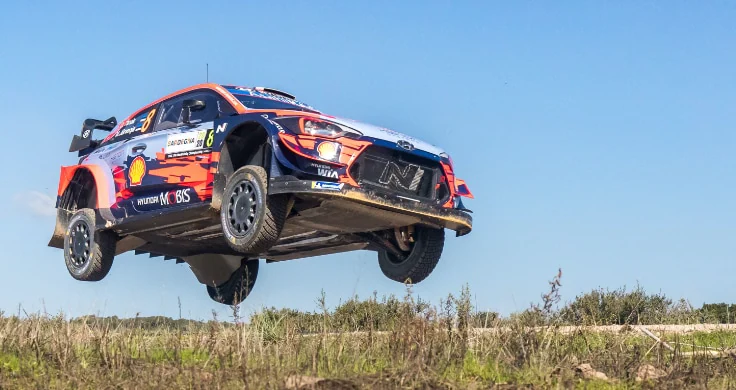
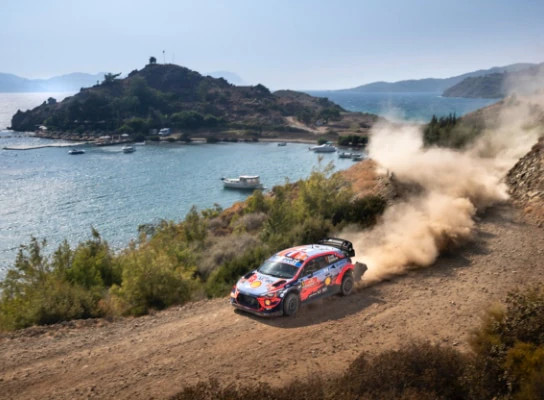
Our customers were also affected by the global pandemic, with many motorsport series having to cancel or shorten their seasons. Nevertheless, the i20 R5, i30 N TCR and Veloster N TCR continued to demonstrate their competitiveness around the world. Our customers competing in our R5 and TCR cars also had a successful year, claiming nine drivers’ titles, five teams’ titles, 104 wins and 253 podiums.
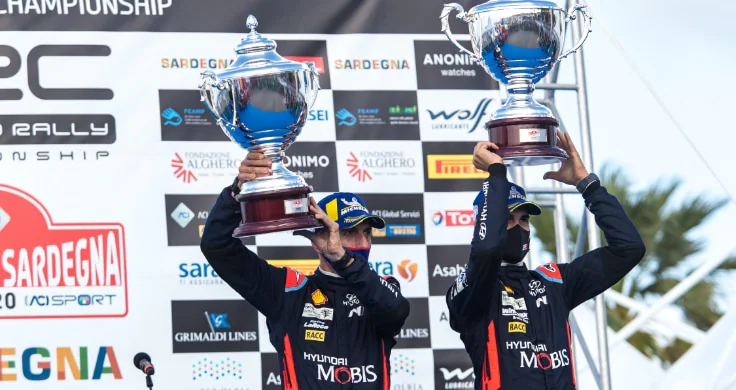
2021 and beyond
As we embark on our eighth season at the top of international rally, we have made it our goal to compete for both the manufacturers’ and driver’s championship titles in 2021. Hyundai Motorsport’s crew of dedicated drivers and co-drivers will compete individually in short, timed stages with our upgraded i20 Coupe WRC cars in WRC 2021. We wish our drivers and our Hyundai Motorsport team the best of luck.
We have to fight for victory at every event, and we are facing fierce competition.
With our first WRC title in 2019, we captured what is arguably the most demanding title in international motorsport. Our first and second manufacturer’s titles were the product of many years of hard work, determination and technological innovation. But the story has only just begun.
To find out more about our rally cars and our 2021 WRC campaign, follow Hyundai MotorSport GmbH(@hmsgofficial) on Instagram. And, to find out more about our high-performance cars made for the racetrack and the road, check out our N high-performance car line-up.


